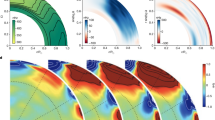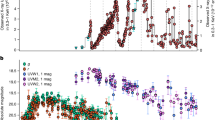Abstract
THE time in which Halley lived was crucial in the history of science in more than one respect, but of all its aspects none is more significant than that which shows the restoration of the possibility of cosmological studies. Astronomy before Copernicus was essentially and altogether cosmological. No heavenly body had an, interest of its own; its sole function was to give a clue to the workings of the universe. But with the dawn of the idea that the universe was infinite, and with the almost simultaneous invention of the telescope, the character of the subject changed completely. The bulk of the universe—the infinite company of the stars—was removed from possible comprehension by finite minds, while the previously inscrutable members of the solar system were brought within human ken. Cosmology thereupon became impossible, and the astronomical study of single bodies began. It was Galileo and Newton who resurrected cosmology, though in a new form. The body of the universe might be inaccessible; but its soul—the universal laws of Nature—could be brought within the grasp of the human mind by the new method of "induction of principles from phenomena", which is the crown of Newton's achievement. It is Halley to whom we owe our knowledge of Newton's work, and it is therefore appropriate that in a lecture dedicated to his memory an attempt should be made to estimate the position reached after two hundred and fifty years of effort along the new lines.
This is a preview of subscription content, access via your institution
Access options
Subscribe to this journal
Receive 51 print issues and online access
$199.00 per year
only $3.90 per issue
Buy this article
- Purchase on Springer Link
- Instant access to full article PDF
Prices may be subject to local taxes which are calculated during checkout
Similar content being viewed by others
References
"Relativity, Thermodynamics and Cosmology" (Oxford University Press, 1934).
Math. Ann., 67, 355 (1909). The theory has been expounded very clearly by M. Born in three articles in Phys. Z., 22 (1921).
Phil. Mag., iv, 4, 358 (1852).
Author information
Authors and Affiliations
Rights and permissions
About this article
Cite this article
DINGLE, H. The Laws of Nature*. Nature 153, 731–736 (1944). https://doi.org/10.1038/153731a0
Issue Date:
DOI: https://doi.org/10.1038/153731a0
This article is cited by
-
Relativity of Temperature Radiation
Nature (1945)
Comments
By submitting a comment you agree to abide by our Terms and Community Guidelines. If you find something abusive or that does not comply with our terms or guidelines please flag it as inappropriate.



